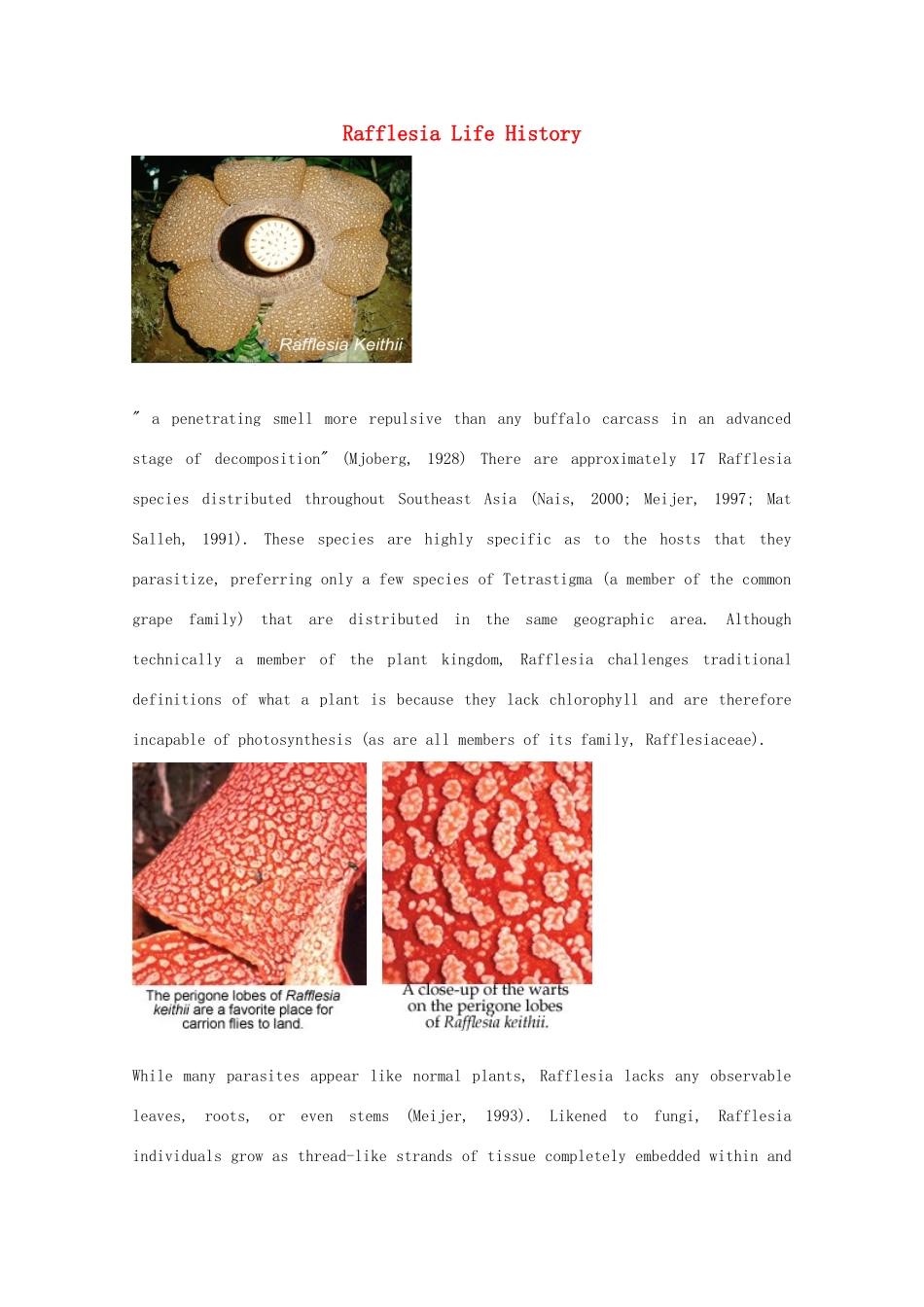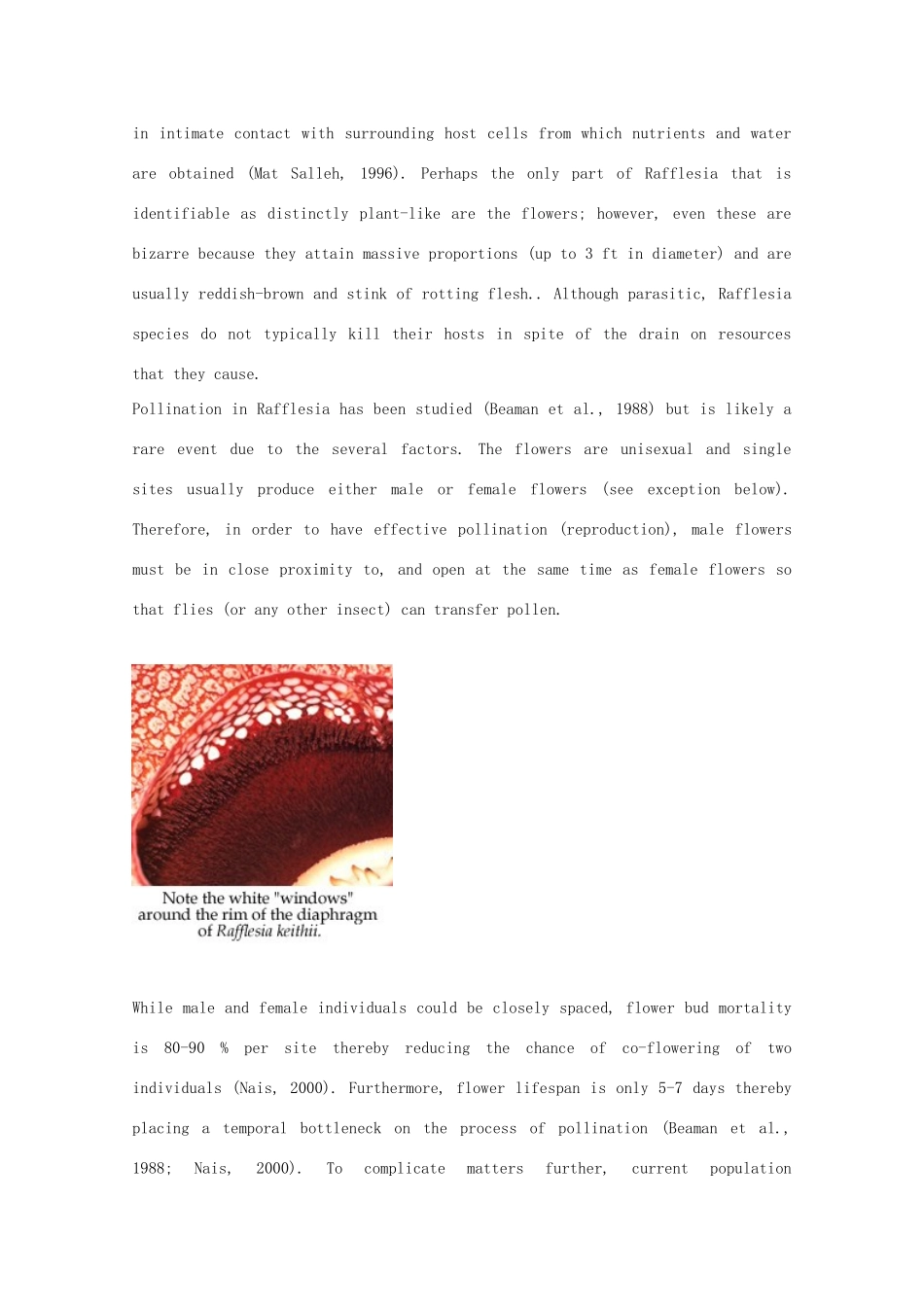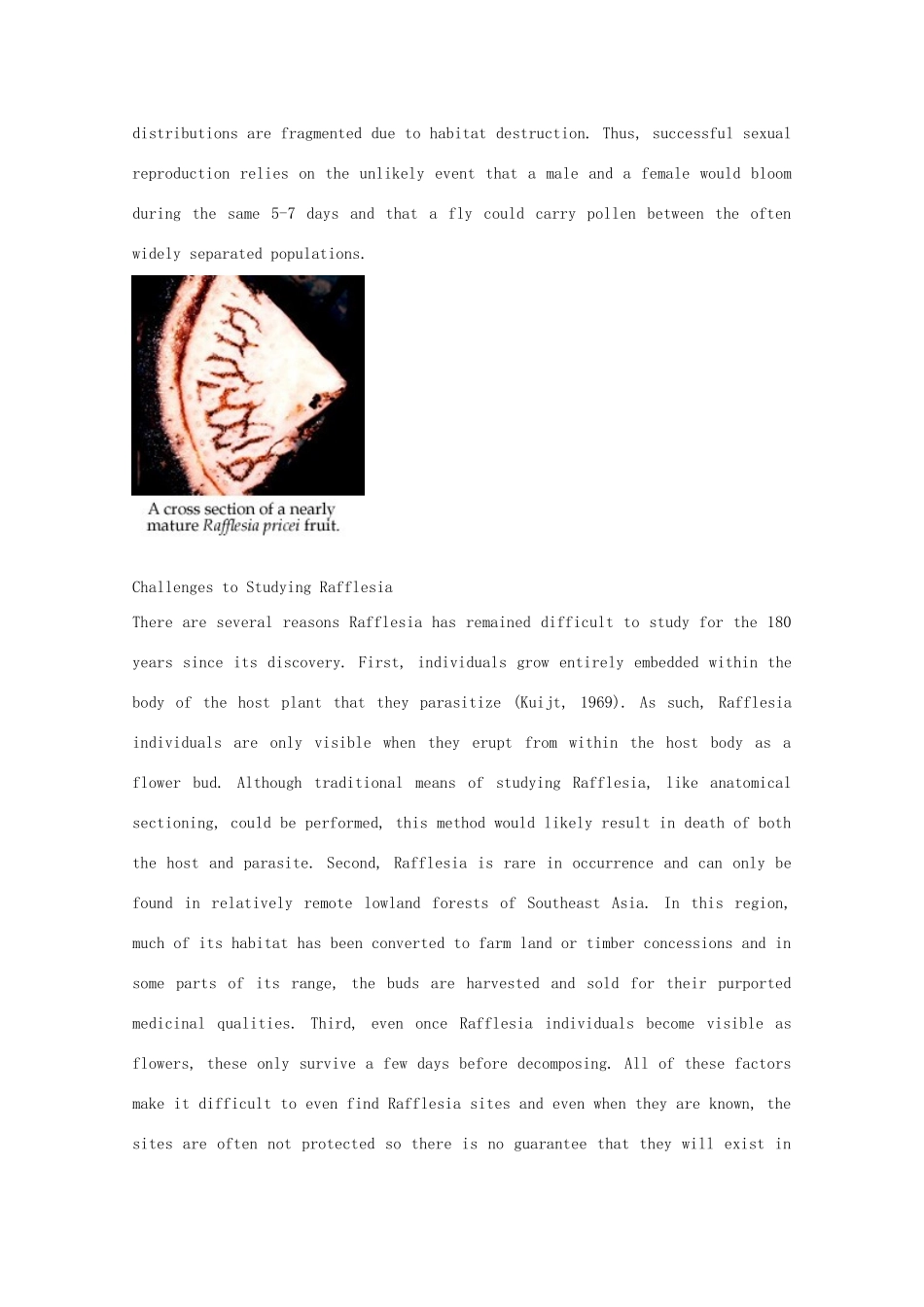Rafflesia Life History" a penetrating smell more repulsive than any buffalo carcass in an advanced stage of decomposition" (Mjoberg, 1928) There are approximately 17 Rafflesia species distributed throughout Southeast Asia (Nais, 2000; Meijer, 1997; Mat Salleh, 1991). These species are highly specific as to the hosts that they parasitize, preferring only a few species of Tetrastigma (a member of the common grape family) that are distributed in the same geographic area. Although technically a member of the plant kingdom, Rafflesia challenges traditional definitions of what a plant is because they lack chlorophyll and are therefore incapable of photosynthesis (as are all members of its family, Rafflesiaceae). While many parasites appear like normal plants, Rafflesia lacks any observable leaves, roots, or even stems (Meijer, 1993). Likened to fungi, Rafflesia individuals grow as thread-like strands of tissue completely embedded within and in intimate contact with surrounding host cells from which nutrients and water are obtained (Mat Salleh, 1996). Perhaps the only part of Rafflesia that is identifiable as distinctly plant-like are the flowers; however, even these are bizarre because they attain massive proportions (up to 3 ft in diameter) and are usually reddish-brown and stink of rotting flesh.. Although parasitic, Rafflesia species do not typically kill their hosts in spite of the drain on resources that they cause. Pollination in Rafflesia has been studied (Beaman et al., 1988) but is likely a rare event due to the several factors. The flowers are unisexual and single sites usually produce either male or female flowers (see exception below). Therefore, in order to have effective pollination (reproduction),...


